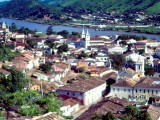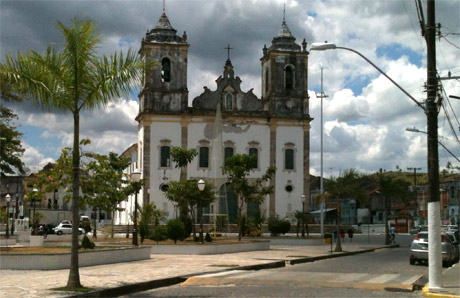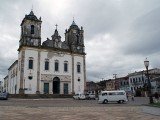Este post também está disponível em:
Português
English

Santo Amaro da Purificação na Baía de Todos os Santos is land of Caetano Veloso and Maria Bethânia, where Dona Canô, mother of these icons of Brazilian popular music, lives.
Since the early days of colonization, myths and beliefs have been part of the life of its inhabitants.
The rural communities in the outskirts of Santo Amaro da Purificação still preserve the old work songs chanted during harvest times.
It is not for nothing that the popular song “Alô meu Santo Amaro, Eu vim conhecer-lhe, Eu vim conhecer-te, Santa santamarense, Pra gente aprender, Pra gente aprender” became famous.
The authentic samba-de-roda still exists in Santo Amaro da Purificação, especially in the District of São Braz, where the Samba Chula group of “seu” João Saturno, known as João do Boi, stands out, having participated in recordings by composer Roberto Mendes, in a project by Antonio Nóbrega and Maria Bethânia.
The first settlers established on the banks of the Traripe River, next to the Jesuit church of 1557, faced fierce resistance from the Indians.
After the murder of a priest inside the church, the place became known as cursed, causing its population to move to the banks of the Subaé River.
The chapel of Santo Amaro was built there; the settlement intensified due to the farms that grew around it and produced sugar cane, tobacco and cassava.
The town was founded in the 16th century, but as a district. The emancipation only happened in 1837. When the locality called “Nossa Senhora da Purificação e Santo Amaro” became Santo Amaro da Purificação.
It was not long before the village became an important center for the commercialization of these products, which allowed its survival after the end of the sugar cane cycle.
The city has preserved buildings from the time of its economic heyday and natural beauty.
Video about Santo Amaro da Purificação

Tourist spots of Santo Amaro da Purificação

1. Igreja de Nossa da Purificação
Completed in 1700, its interior is decorated with Portuguese tiles and oil paintings on wood by José Joaquim da Rocha.
The festivities in honour of the patron saint, which begin a week before 2 February, the day consecrated to her, are organized by Dona Canô.
The apogee of the feast is a ritual similar to that of the Bonfim Festival, with the participation of more than 400 Bahian women who wash the stairs and the floor of the church with scented water.
2. Museum of the Recolhimento dos Humildes
It has a valuable collection of 19th-century furniture and pieces of sacred art, some of which date from the 17th century and once belonged to mill chapels.
3. Urubu Waterfall
The 38m high waterfall has five waterfalls. Access is only allowed with the accompaniment of guides accredited by the Secretariat of Culture, who can be contacted.
Bahia.ws is the largest tourism and travel guide for Bahia and Salvador.




















